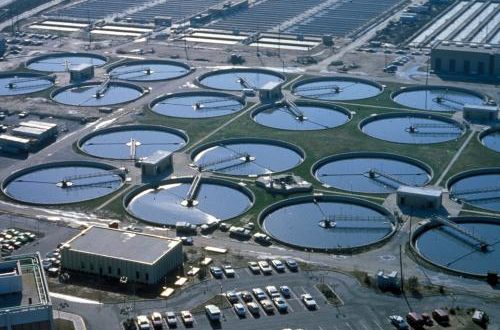Using a wastewater treatment system can help reduce the amount of water used in a home. While there are several advantages to using a wastewater treatment system, there are some disadvantages as well.
ZK Decanter water treatment centrifuge is a high-quality wastewater centrifuge manufacturer. It can effectively realize sand or mud separation of wastewater, so as to manage to protect, recycle and reuse the water resources. ZK wastewater centrifuge can be used in urban domestic sewage treatment, chemical sewage purification, and other related sewage treatment industries.
Disadvantages of wastewater treatment
Despite its benefits, wastewater treatment is not without its disadvantages. Nevertheless, the treatment process has the capacity to produce cleaner water for humans and wildlife. The process of treating wastewater is a multi-step process that involves the physical, chemical, and biological activities of a treatment plant. The process is divided into four stages: Primary, Secondary, Tertiary, and Quaternary. The primary stage deals with removing organic matter and contaminants from the water.
The secondary stage deals with removing smaller suspended solids. The tertiary stage deals with removing pathogens. The tertiary stage may involve the use of a variety of methods, such as bioreactors and aerated pods. The process of sedimentation can also reduce the TSS. The chemical coagulation process is one of the more popular methods of reducing TSS. Chemical coagulation involves the addition of chemicals and additives to the water. These chemicals help the process of settling finer colloidal particles. The additives also help neutralize charged particles.
Biological vs physical process
Biological wastewater treatment is a process where microorganisms break down organic substances. This process can be performed in many different ways, from simple cesspits to more advanced activated sludge plants. The types of treatment systems can depend on the characteristics of the water.
Biological wastewater treatment is an eco-friendly alternative to mechanical processes, and can be less expensive. However, it is a complex process. It requires a variety of treatment stages to reach the desired quality of water. The process is mainly designed to remove biodegradable pollutants. It may also include additional stages, such as UV treatment and chlorination. Biological treatment systems may also have aeration. Aeration helps to increase the oxygen level in the wastewater, providing the necessary conditions for metabolic processes. It can also help to reduce odors.
Testing is continuous throughout the process
Generally speaking, the best way to handle wastewater is to treat it. The process involves various steps that are necessary to remove dissolved pollutants, phosphorus, soluble solids, and biodegradable organic matter. Typically, there are three stages to the process. These stages include primary, secondary, and tertiary treatment. In addition to removing pollutants from the water, each stage is intended to improve the overall quality of the effluent.
The best way to determine the effectiveness of each stage is to perform specific tests before it can pass on to the next one. The quality of the treated effluent has a profound impact on the overall performance of the entire wastewater treatment process. Some locations may require a higher grade effluent to ensure that the water is not contaminated. A more complicated process called advanced wastewater treatment is employed in some locations, particularly those with highly polluted water. The process involves various stages that are necessary to remove dissolved pollutants, biodegradable organic matter, and other contaminants. The nitty gritty of the process involves an array of sanitizing agents that are added to the water at each stage.
Alternative wastewater treatment systems
Historically, conventional on-site septic systems have been designed and built with relatively low cost and limited liability. The systems were not required to be upgraded when they failed and failures were not detected. The systems did not remove nitrogen from wastewater. In addition, they degraded coastal waters and led to eutrophication.
The Federal government has made a modest investment in on-site wastewater technology. EPA has funded Small Flows Clearinghouse at West Virginia University since 1979 to collect, disseminate, and manage technology transfer information. The Small Flows Clearinghouse also supports the National Onsite Demonstration Project. Advanced on-site treatment and disinfection technologies can address human health concerns, and decrease nitrogen and phosphorus levels. They can also improve effluent quality. These technologies can also address aquatic ecosystem health concerns.
Septic systems are regulated by state or county codes. The codes regulate design and siting of the systems. However, the systems are not monitored in the long term. In addition, local health departments have limited staff, and often lack the authority to enter private property. They are also often reluctant to enforce costly upgrades.
Reducing energy consumption
Using green chemistry to reduce energy consumption in wastewater treatment can solve the challenges of this industry. Wastewater treatment is an important industrial energy user. Energy consumption in wastewater treatment is estimated to be more than a billion dollars each year. It can be a significant concern for public health and sustainability. Using energy efficiency measures can help wastewater treatment facilities become more self-sufficient. Several indexes have been developed to evaluate the performance of wastewater treatment plants. These indexes include pollution emission indexes and specific energy consumption indicators. These indexes encourage water treatment enterprises to continuously improve for competitiveness.
Energy consumption in a wastewater treatment plant is divided into three main parts. These include direct energy consumption, indirect energy consumption, and biological treatment. The main energy-consuming equipment in a wastewater treatment plant includes aeration equipment, lift pumps, and return pumps. Regular equipment inspections can reduce energy consumption. However, aging equipment has higher energy consumption than newer models.



